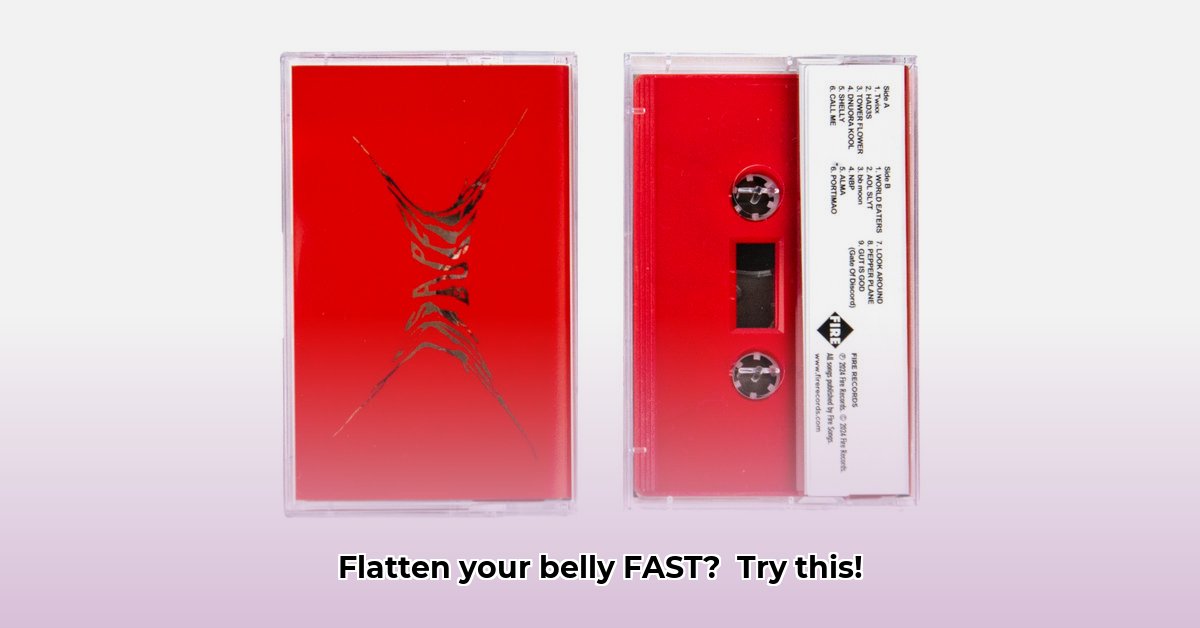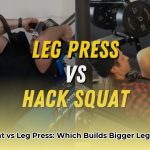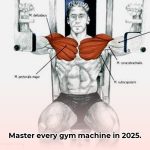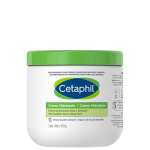Frustrated with that extra belly fat? Want a flat stomach but don’t know where to start? This guide will show you how to ditch the belly bulge for good. We’re skipping the fad diets and miracle cures – this is a realistic plan to help you lose that stubborn fat and keep it off. We’ll cover effective exercises, smart eating habits, and practical tips to make this journey easier, so you can finally feel confident and comfortable in your own skin. For more on lower body strength training, check out this article on leg exercises. Let’s get started!
Getting Started: Your Journey to a Flatter Stomach
Ready to tackle that stubborn belly fat and finally achieve a flatter stomach? Let’s dive in! Forget the idea that you can magically target just your abs; this “gut buster” plan focuses on overall fat loss, which naturally leads to a slimmer midsection. Think of it as a holistic approach—a complete body makeover that just happens to flatten your belly as a fantastic side effect. This integrated approach combines strategic exercise, mindful nutrition, and lifestyle adjustments to create a sustainable path to a healthier, leaner you.
Understanding the Science Behind a Flatter Belly
Losing belly fat isn’t about some magic trick; it’s about the basic principles of energy balance. Picture your body as a bank account: calories consumed are deposits, and calories burned are withdrawals. To lose weight, you need to make more withdrawals than deposits—meaning you burn more calories than you take in. This creates a calorie deficit, which is crucial for your body to tap into stored fat, including that stubborn belly fat. This isn’t just about crunches; we’re talking about a comprehensive approach that combines effective workouts and a smart diet.
There are two main types of belly fat: subcutaneous (the fat just under your skin) and visceral (the fat deeper inside, around your organs). Visceral fat is particularly concerning because it’s linked to various health problems, including heart disease, type 2 diabetes, and certain cancers. A balanced approach tackles both types, improving your overall health and fitness. The good news is that regular exercise and a healthy diet can significantly reduce both types of belly fat.
While some experts suggest that spot reduction (losing fat in only one area) isn’t possible, research shows that overall fat loss does lead to reduced belly fat. This is because your body doesn’t selectively burn fat from one area over another. It burns fat from all over, including your belly. So, this “gut buster” workout is about total body transformation, not just targeting one specific area. The key is consistency and a commitment to a healthier lifestyle.
Your Gut Buster Workout Plan: A Step-by-Step Guide
This plan blends high-intensity interval training (HIIT) with strength training to maximize calorie burning and muscle building. Aim for 3 to 4 sessions per week, remembering to include rest days for muscle recovery.
Step 1: Warm-up (5 minutes)
Before jumping into the main workout, prepare your body with a short warm-up. This helps prevent injuries and gets your muscles ready for action. Here’s what to do:
- Light Cardio: Start with 2 minutes of light cardio, like jogging in place, jumping jacks, high knees, or even some brisk walking. This increases your heart rate and blood flow.
- Dynamic Stretching: Spend the remaining 3 minutes on dynamic stretches—movements that mimic the workout’s actions. Think arm circles, leg swings, torso twists, walking lunges, and high knees. This prepares your muscles for the workout ahead and improves flexibility.
Step 2: The Gut Buster Workout (20-30 minutes)
This section is where the real magic happens. We’ll use HIIT to maximize calorie burning and strength training to build lean muscle, which boosts your metabolism. Perform each exercise for 45 seconds, followed by a 15-second rest. Complete 3 rounds of this circuit, with a 1-minute rest between rounds. As you get fitter, you can increase the work interval to 60 seconds.
- Burpees: This full-body exercise is a fantastic calorie burner and total body strengthener. Remember to keep your form correct to avoid injuries. Modification: Step back instead of jumping for a lower-impact version.
- Mountain Climbers: This exercise targets your core and is an excellent cardiovascular challenge. Focus on driving your knees towards your chest while keeping your core engaged.
- Jumping Jacks: A classic cardio move that gets your heart rate up fast. Maintain a steady pace and focus on proper form.
- Kettlebell Swings (or Dumbbell Swings): If you have access to kettlebells or dumbbells, incorporate swings for a fantastic full-body workout that improves both strength and cardiovascular fitness. If you’re a beginner, start with lighter weights and focus on using your hips to drive the swing.
- Plank: A static core exercise that strengthens your abdominal muscles and improves stability. Maintain proper form to get the most benefits – a straight line from head to heels, engaging your core and glutes. Hold for 30-60 seconds.
Optional Additions:
- Russian Twists: Use a medicine ball or dumbbell for added intensity and to target your obliques.
- Bicycle Crunches: Another effective core exercise that works your abs and obliques.
Step 3: Cool-down (5 minutes)
After your intense workout, take some time to cool down. This helps your heart rate gradually return to normal and prevents muscle soreness.
- Static Stretching: Hold each stretch for about 30 seconds. Focus on major muscle groups worked during your workout, such as your legs, arms, chest, and back. Examples include hamstring stretches, quad stretches, tricep stretches, chest stretches, and calf stretches.
Important Note: Listen to your body. Modify exercises as needed. If you’re a beginner, start slowly and gradually increase the intensity and duration of your workout. Consult your doctor before starting any new exercise program.
Fueling Your Gut Buster Journey: Nutrition
Exercise is only half the battle. Your diet plays a crucial role in achieving your goals. Focus on a balanced approach, including these essential elements:
- Protein: Protein is crucial for building and repairing muscle tissue, which boosts your metabolism. Good sources include lean meats, poultry, fish, eggs, beans, lentils, tofu, and Greek yogurt. Aim for roughly 0.8 grams of protein per kilogram of body weight daily.
- Fiber: Fiber keeps you feeling full and satisfied, reducing the likelihood of overeating. Incorporate plenty of fruits, vegetables, whole grains, and legumes into your diet. Aim for at least 25-30 grams of fiber per day.
- Healthy Fats: Don’t cut out all fats! Healthy fats are essential for hormone production, brain function, and overall health. Excellent sources include avocados, nuts, seeds, olive oil, and fatty fish like salmon.
- Limit Processed Foods, Sugary Drinks and Alcohol: These provide empty calories and contribute to fat storage, especially around the abdomen.
Sample Meal Plan (Adjust to Your Calorie Needs):
| Meal | Example |
|---|---|
| Breakfast | Oatmeal with berries and nuts or Greek yogurt with fruit and a sprinkle of granola |
| Lunch | Large Salad with grilled chicken or fish and a variety of colorful vegetables, or a whole-wheat wrap with hummus and vegetables |
| Dinner | Lean protein (salmon, chicken breast, tofu) with a large portion of steamed or roasted vegetables |
| Snacks | Fruits (apple, banana, orange, berries), vegetables (carrots, celery, bell peppers) with hummus, a handful of almonds or walnuts, a small serving of Greek yogurt, or a protein shake |
Remember, portion control is key. Mindful eating means paying attention to your hunger and fullness cues. Don’t starve yourself; instead, make nutritious choices that support your fitness goals. And don’t be afraid to experiment and find healthy meals that you enjoy. Preparing your meals in advance can help you stay on track!
Overcoming Challenges: Staying on Track
Life gets in the way sometimes; that’s a given. Here’s how to stay dedicated to your goals even when things get hectic:
- Lack of Time: Even a short, 15-minute workout is better than no workout. Short, intense bursts of exercise can be very effective. Try a quick HIIT routine you can do at home with no equipment.
- Lack of Motivation: Find a workout buddy for accountability and support, or reward yourself for reaching milestones (non-food rewards!). Consider joining a fitness class or online community for extra motivation.
- Plateaus: If you hit a weight-loss plateau, it’s time to mix things up. Try modifying your workout routine, trying new exercises, or adjusting your diet. Consulting a nutritionist or personal trainer might be helpful. Sometimes, simply increasing your water intake or getting more sleep can help break through a plateau.
- Cravings: Plan for cravings by having healthy alternatives readily available. If you’re craving something sweet, reach for a piece of fruit or a small square of dark chocolate.
Remember, this journey isn’t a sprint; it’s a marathon. Consistency is key. Be patient with yourself and celebrate your progress along the way. A leaner, healthier you—and that flatter belly—is within reach. Just keep moving
- Boost Your Day: The Ultimate Morning Routine Drink Guide - October 30, 2025
- Unlock Your Potential: Pictures of Personal Growth for Lasting Change - October 28, 2025
- Personal Growth Tattoo Ideas: Discover Your Perfect Symbol - October 26, 2025
















